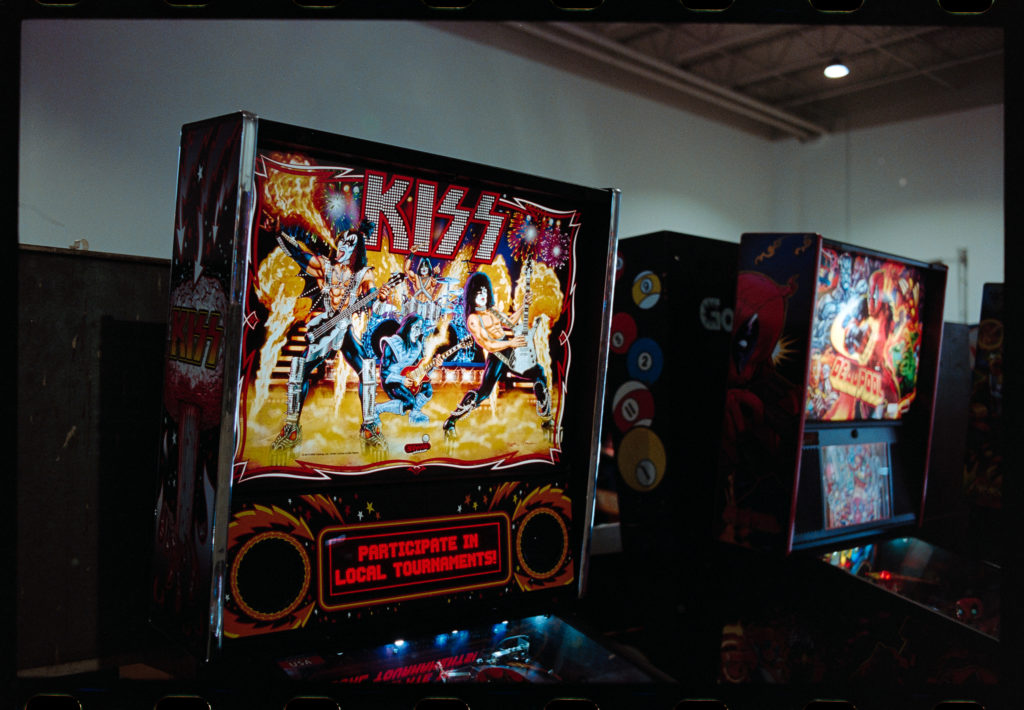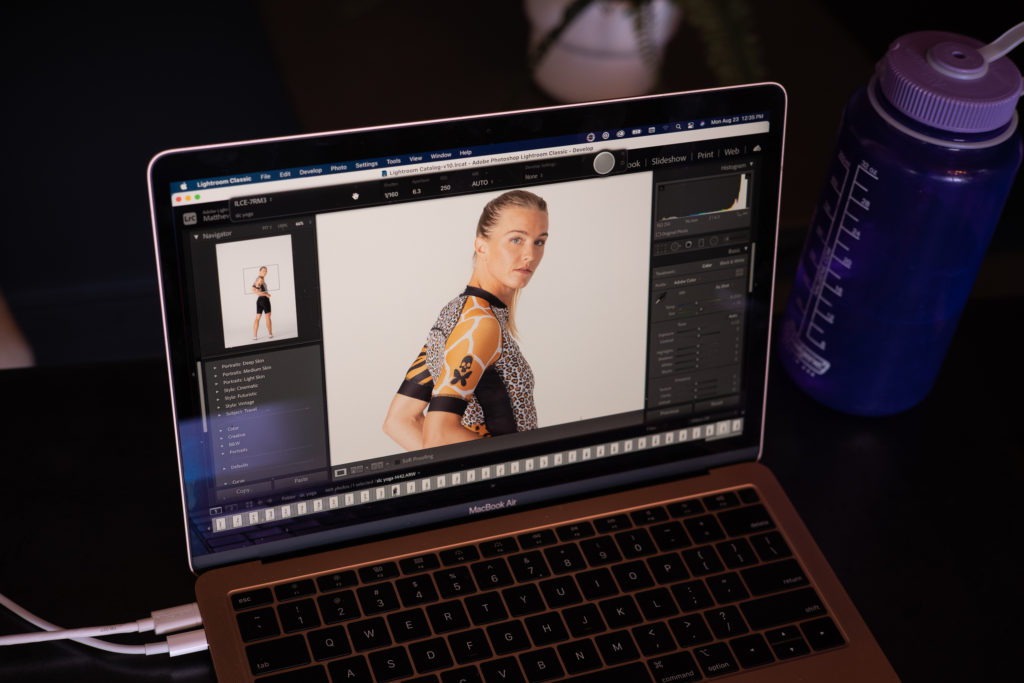The modern Leica summarit line was released in 2007. The line of summarit lenses got an update in 2014 and was effectively terminated in 2020. Judging from the discussion online 13 years after it’s release, the decision to introduce a lower cost line of Leica lenses was a polarizing one. Detractors suggest that the release was an act of Leica desperation because Leica was forced to compete with solid releases from Cosina Voigtlander. Proponents suggest that Leica was helping users by offering a quasi-maybe-sort of-not really “entry-level” set of lenses that normal people can use to make pictures while collectors collected the more exotic lenses so they could stare at them on a shelf. I have no idea why Leica released the modern Summarit line nor do I care.
Criticism regarding these lenses runs so deep that forum dwellers, commentators, and reviewers who despise these little lenses seem to do everything they can to sway people away from buying them. I know this is a fact because I followed their advice…made an ill-informed purchasing decision…and now I am upset about it. We will revisit this later.
There are two versions of the modern 50mm Leica Summarit-M. The first version was an f/2.5 lens and had a square, clip-on, lens hood. The later version was am f/2.4 version with a beefier, more integrated, screw-on lens hood. I tested the f/2.4 version. It is reported that the optics between the two versions are the same and all that changed is the marketing and the build design including the lens hood.
On Garden Gnomes and parked cars.
I recoil in horror when I hear people say that electronics are sexy. I cringe when the new cell phone comes out and the reviewer uses the word “sexy” to describe a rectangular piece of glass. It, therefore, also kills me to read this review even though I wrote it. I couldn’t help myself. The lens hood on the Leica Summarit 50mm F2.4 is a big, chunky, cold, slab of protective, sexy, metal. I hate myself. I really do.
If you are a lens hood aficionado, or if you leave your lens hood on your lenses all the time for any reason, you will likely understand that this lens hood is the pinnacle of lens hood design. For the uninitiated,
- The ideal lens hood isn’t wider than the lens body. This prevents it from getting caught on dividers when putting it in and out of a camera bag.
- The ideal lens hood should be built into the body of the lens rather than screw on to the filter thread. Lens filters, therefore, are recessed in the hood and lens filters don’t add any extra length to the lens.
- The lens hood should be robust and deep enough to protect the glass.
This sexy little minx of a hood checks all the boxes because, as stated previously, it is the pinnacle of lens hood design. Every time I write “pinnacle of lens hood design” it sounds daft and sarcastic. Please note, there is no sarcasm. I am serious as a second wave of Covid-19.
This lens also has a focusing tab and you know how I feel about focusing tabs.
This lens has a shorter focusing throw than the Summicron V5 and you know how I feel about short focusing throws.
What is not to like?
Does it have SOUL?
If I don’t get flamed for recommending a lens solely because of ergonomics, I am surely going to get flamed for saying that when I compare the images from the Summicron 50mm V5 to the Summarit 50mm f/2.4, the differences in real-world terms, are negligible. Don’t get me wrong. There are differences but the differences are about as large as a dog’s collar bone (1). The Summicron has slightly more soul, the colors are more muted/soulful, there are differences between the way the two lenses handle highlights, and the Summarit is slightly sharper wide open but before you get carried away, it is time for a reality check.
When I was evaluating them side by side, neither was “better” than one another in any meaningful way. Different – yes. Better – no. I routinely had to check the metadata to see which images I was looking at. In the real world, unless you are doing side by side comparisons, I do not feel that “image quality” meaningfully differentiates the Summicron V5 from the Summarit-M 50mm f/2.4.
I did a fairly silly test you might be interested in. I compared the Summicron 50mm wide open (e.g. at f/2) to the Summarit-M 50mm f/2.4 wide open (e.g. at f/2.4). Although I do not generally do tests like these and I don’t get too worked up about bokeh (unless it is pig vomit bokeh), I couldn’t help myself because I have seen so many suggestions over the years that people should buy faster lenses to get better bokeh in their images. My goal was to see if there was a significant difference in the appearance of the bokeh between the Summicron 50mm and the Summarit 50mm f/2.4 when shot wide open. Spoiler alert: to my eyes, the Summicron is a bees fart more creamy and pleasing but this difference appears to be negligible in the real world. Normal people (at least the people I care about) don’t see or care about the difference.
I know because I showed the following pictures to several normal people including a designer who can pick a Leica image out of a lineup and a Leica photographer who doesn’t frequent photography forums. With regard to the appearance of the bokeh, none of them noticed or cared about the difference. None of them preferred one image over the other. All noticed that the exposure was a little different and the appearance of the highlights on the bike frame and the black sandal are different. One person politely asked me to stop bugging them with stupidity. Here are the images.
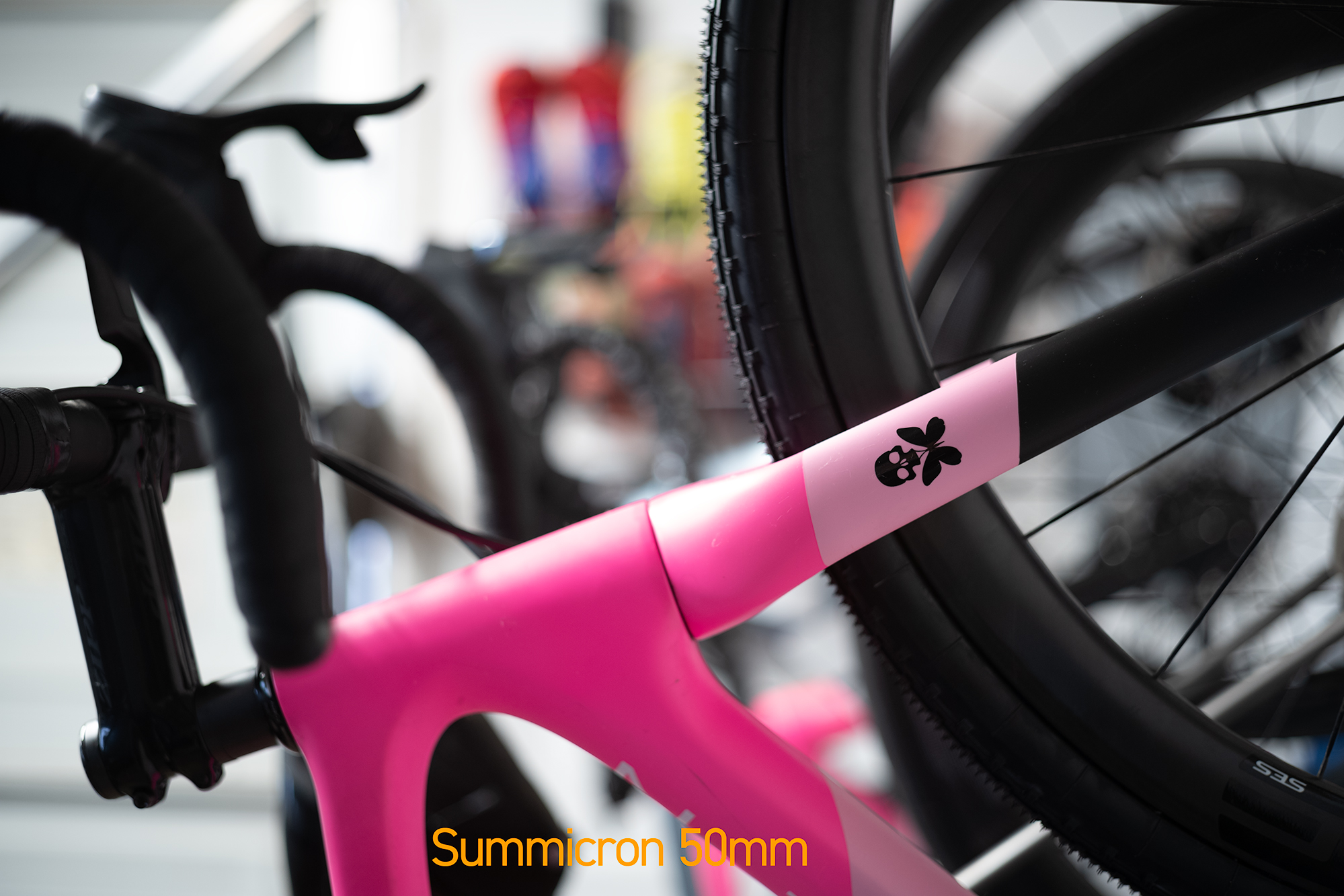
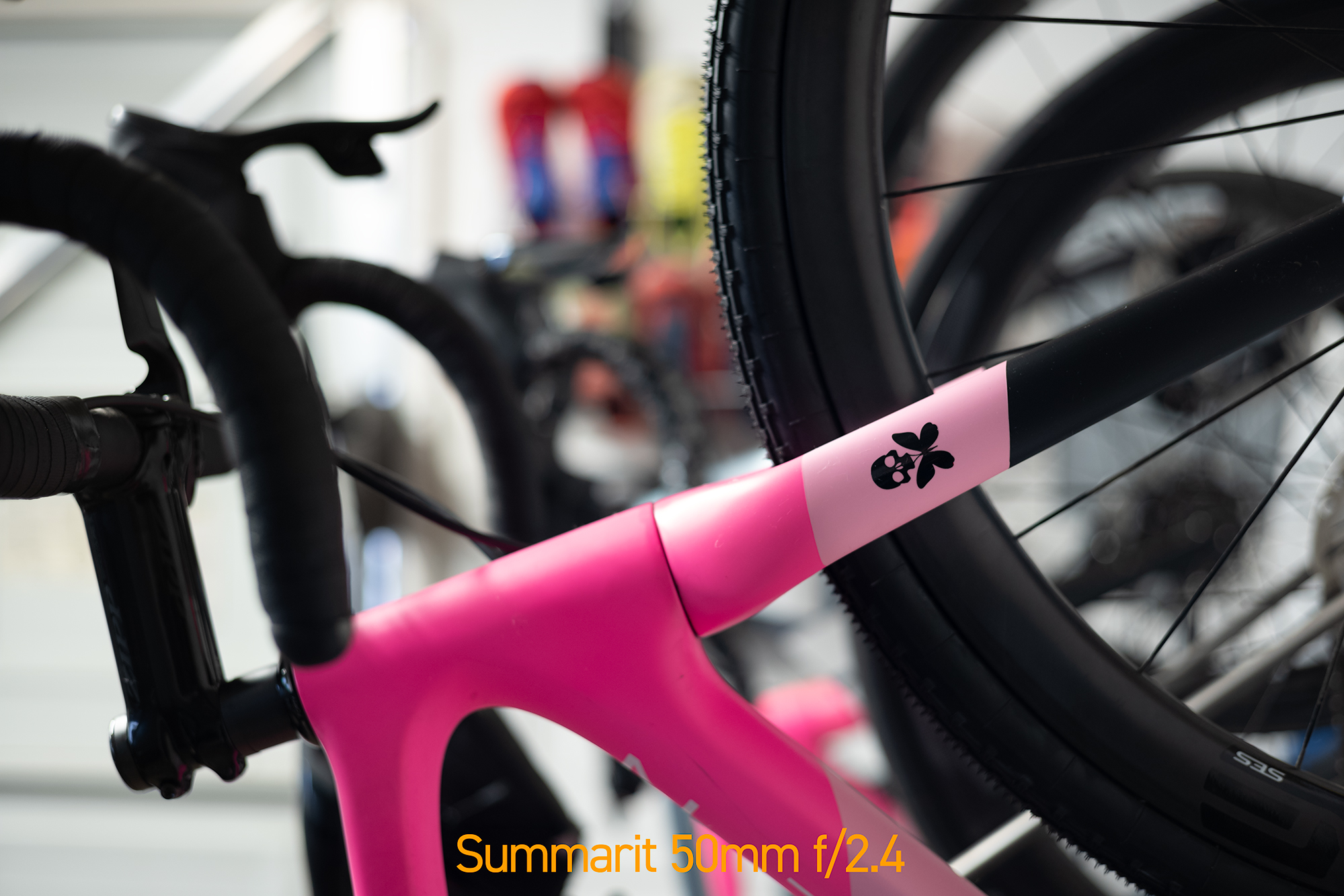
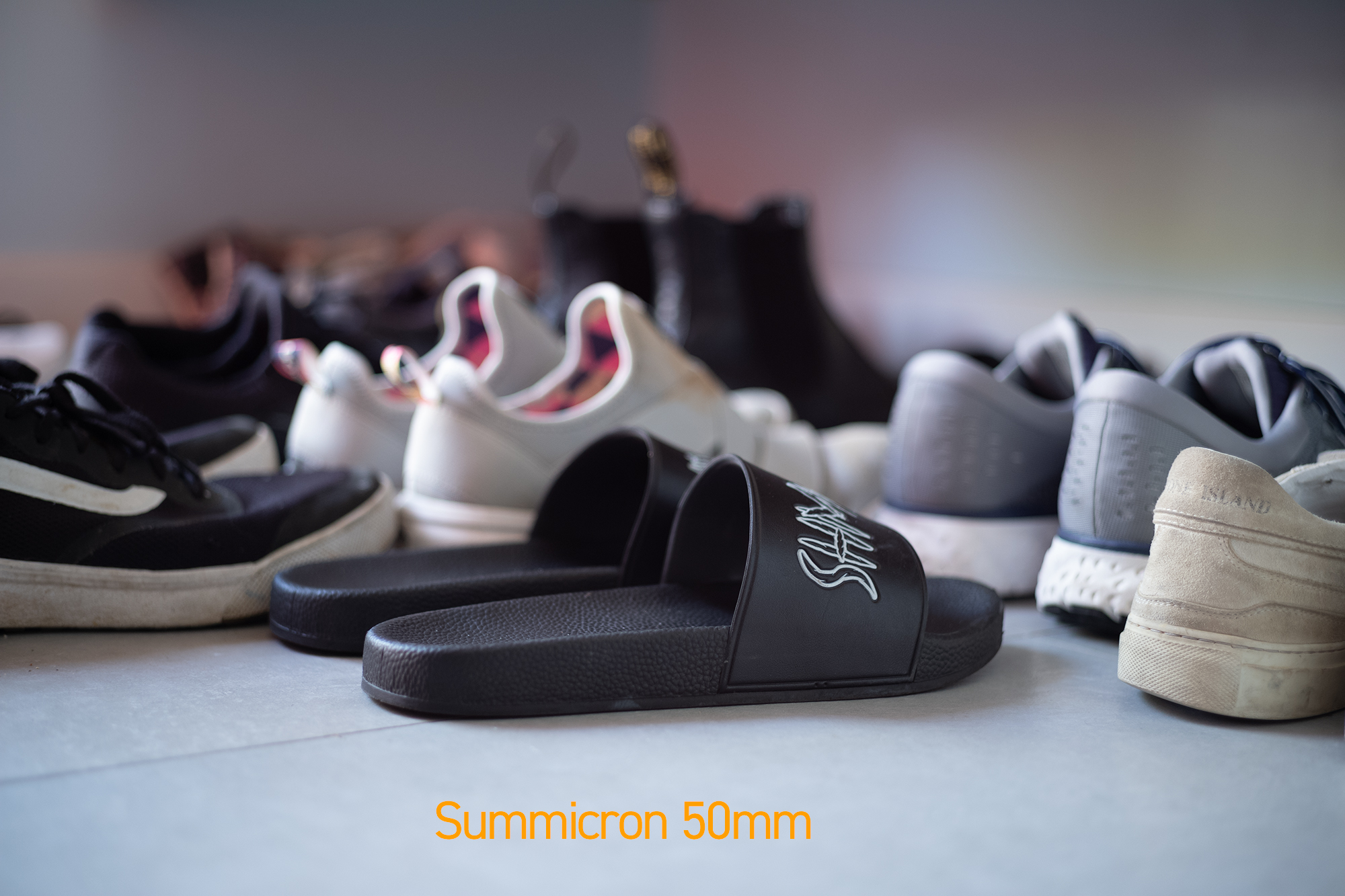
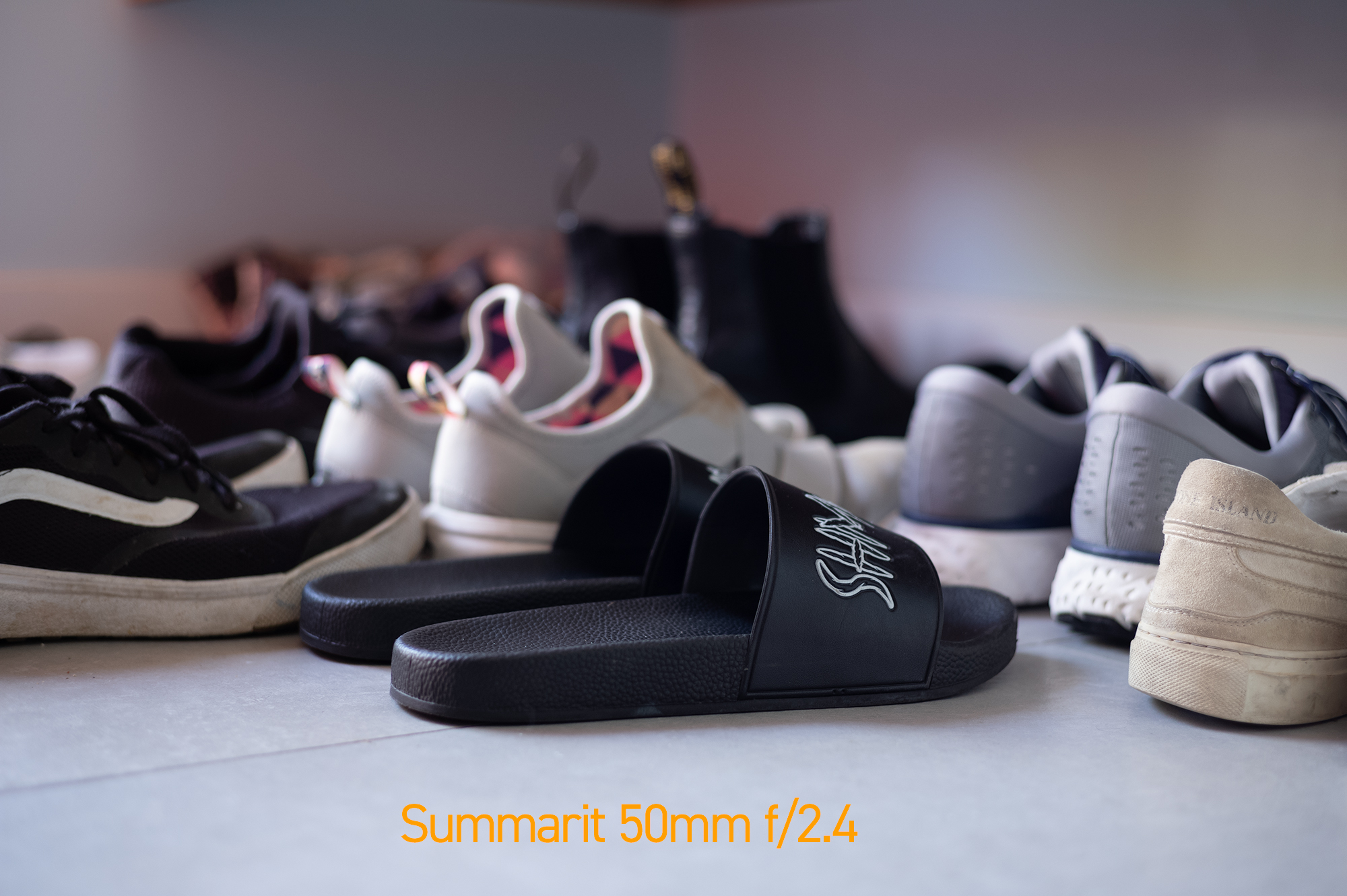
With that out of the way, we return to our question, does the Summarit-M 50mm f/2.4 lens have soul?
Answer: yes. It is similar to the Summicron 50mm V5.
Question: your Summicron review was pretty crappy. You didn’t even really review it. You just complained about the lens hood and the lack of a focusing tab.
Answer: is that a question?
Question: no just a complaint.
Answer: then keep complaining because that is the end of this review. I am going to subject you another non-review because these Leica lenses are the lenses that the others are compared to. The lowly and much maligned Summarit-M f/2.4 is no different. If you believe in the Leica look (like I do), it has soul albeit a fleas wing less than soul than the Summicron-M 50mm. It isn’t, however, vintage soul like you would find in the Leica Summarit 50mm f/1.5 if that is what you seek.
I don’t understand the hostility toward the Summarit-M 50mm f/2.4. For me, all of the negative comments should be classified as hate crimes.
So did I keep it?
Unfortunately not. I had to send it back. My time with the Summarit-M 50mm f/2.4 was shorter than with other lenses because it was rented from Lens Rentals. I already owned the Summicron 50mm V5 so I could not justify another 50mm purchase at the time of the review. I rented this one because I couldn’t see how any website called Leica Lenses for Normal People, could exist without a review of the Summarit-M 50mm f/2.4.
That, however, does not mean I cannot justify selling my Summicron 50mm V5 and buying the Summarit 50mm f/2.4. Blasphemer you say? Nope. Hear me out.
It is widely recommended that you can purchase a used Summicron-M 50mm for less (or just a little more) than a Summarit-M 50mm f/2.4 so the smart math is to get the Summicron. It is possible that math was true when these lenses were released but in 2020 the math doesn’t quite work in all cases.
In 2020, a good quality, used, Summicron 50mm costs in excess of about $1600. Unless you are buying it from a reputable dealer, any used purchase carries some degree of risk. On the other hand, you can find mint Summarit 50mm f/2.4 and f/2.5 lenses for right around $1000-$1200 from private sellers. The recommendation that the smart money is to buy a used Summicron 50mm rather than a Summarit 50mm based solely on price isn’t always valid in 2020.
When I factor 1) what my time is worth fighting with the stupid lens hood on the Summicron V5 2) lamenting it’s lack of a focus tab and 3) because if you are actually planning on using the lens, buying good glass is not an investment, the decision to purchase a Summicron 50mm vs a Summarit-M 50mm f/2.4 is more nuanced. For example,
- If you enjoy vintage lenses more than new lenses, for any reason, get the Summicron.
- If you really need to save money and you can find a beat-up Summicron with good glass, get the Summicron.
- If you don’t want to mess around with used, old stuff, that might have issues, get the Summarit
- If you want a focusing tab get the Summarit or a V4 Summicron.
- If you shoot film or an older Leica M with poor ISO performance, and you can’t afford a Summilux) get the Summicron
- If you shoot a Leica M-10 (or equivalent) or any mirrorless camera from Sony, Fuji, etc, either the Summicron or Summarit will work just fine for you.
- If you are a lens hood aficionado, like myself, get the Summarit f/2.4. The hood on the f/2.5 is fine but doesn’t rise to aficionado standards.
As you can see, if you are a photographer and not a lens collector, the decision isn’t as straightforward as some would make it seem.
In my situation, if my choice is to keep a 50mm Leica rather, the Zeiss, Voigtlander, or one of the other lenses I tested, I am going to put my money where my mouth is, buy a Summarit, sell my Summicron, and live happily ever after with my perfect lens hood,
To learn more about which lenses I kept and which lenses I sold, learn from my experience, please check out my Leica Lenses for Normal People:The Recommended List.
(1) most dogs don’t have collar bones. If they do happen to have them, they are essentially vestigial and minuscule. Legend has is it a veterinarian once removed one after a dog got bit by a snake thinking it was a snake tooth lodged in the dog’s shoulder. That probably never really happened but vet students are told that story to remind them not to remove vestigial collar bones in dogs. If you were wondering, cats have collar bones. I do not know of any stories where a veterinarian accidentally removed a cat’s collar bone.
Sample Images (film images with black borders)

